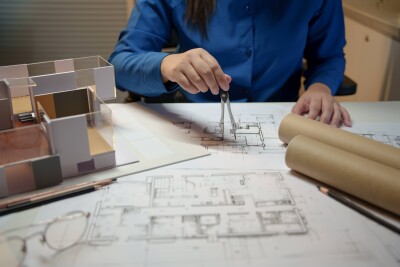It seems like every single day there are more reality capture solutions being put out to help throughout the life of a construction project, and while that’s a slight exaggeration of the reality of the situation, it is a constantly-evolving space. There are a bevy of benefits to be had for the companies that do incorporate the technology into their workflows, however, with contractors, engineers, and asset owners alike all having the opportunity to gain from it. And with growing frequency we are seeing more and more of these stakeholders jump on board, with positive results.
That said, the industry certainly hasn’t incorporated reality capture ubiquitously to this point. Earlier this year, Dodge Data and Analytics ran a survey and released a subsequent report, as well as an accompanying webinar – featuring Dr. Donna Laquidara-Carr, the industry insights research director for Dodge Construction Network, and Troy Dahlin, the Vice President, Heavy Construction Segment for Leica Geosystems – detailing the many benefits of reality capture as told directly from contractors, engineers, and owners who are taking advantage of reality capture for their projects.
There is a ton of fascinating data coming out of this survey showing not just the general idea that all stakeholders are benefiting from this type of technology, but also specifically where certain types of workers are benefiting. The report started with a simple look at what types of reality capture technology people are using, excepting smartphones which are largely ubiquitous in the space at this point. For all three groups of contractors, engineers, and owners, drones and digital cameras were the most reported technology used, though owners also reported widespread use of both mobile mapping systems as well as detection and ground penetrating radar, with each coming in with at least 40 percent of respondents indicating they have used this.
Looking at things another way, focusing on contractors separated by the size of the firm, you see predictably that the large revenue firms use most of types of reality capture at the highest rate, though interestingly the smaller firms actually use handheld laser measurement devices at a significantly higher rate – 28 percent compared to 15 percent – than medium-sized firms. That said, even for the larger firms all types of reality capture technology excepting droners and aerial mapping come in at less than 50 percent, showing an opportunity for broader use in the industry.
Once we get through the types of technology that is used, the report and webinar really start to hone in on why the adoption of reality capture can benefit all of these stakeholders, looking at it from the perspective of both safety and productivity. Safety is of course of the essence for any of these projects, as keeping workers safe is the top priority for any company. With part of this survey asking the three groups of stakeholders what specific benefits they see from reality capture, nearly half in every group mention the improved safety as being one of the benefits. As Dahlin states in the accompanying webinar, safety on a job site is not simply about avoiding collisions of people or assets. There is also a safety risk a lot of times in taking measurements where people have to physically be there to do so, oftentimes being put in compromised positions to get the most accurate and useful data. By utilizing reality capture, the technology can do that work without the worker having to potentially put themselves in harm’s way.
In addition to the safety benefits, the report and webinar talk extensively about the productivity and general business benefits that adopters are finding thanks to reality capture. Nearly half of the contractors surveyed reported a bevy of benefits thanks to reality capture, including but not limited to things like improving the ability to track work progress, improving the overall quality of the work – something a whopping 71 percent of engineers also agreed with – and improving the ability to minimize the impact of onsite errors. That last part is important, particularly in light of the oft-mentioned 2016 McKinsey report that touches on how often construction projects are late, often due to these types of errors that can derail projects. Having that accurate reality capture on hand can help catch those errors more quickly as well as provide better information to make a plan in order to mitigate whatever the mistake.
It’s always a challenge to take on more technology into a workflow for construction companies at all levels, and with reality capture specifically accessibility was an issue for a long time. As the technology continues to evolve, however, it has indeed become easier and less expensive to use than ever, allowing firms of all sizes to reap the benefits. There is still plenty of room for more adoption, though, and this report and webinar details all the ways that those still remaining on the fence can benefit if and when they do ultimately take the leap.






